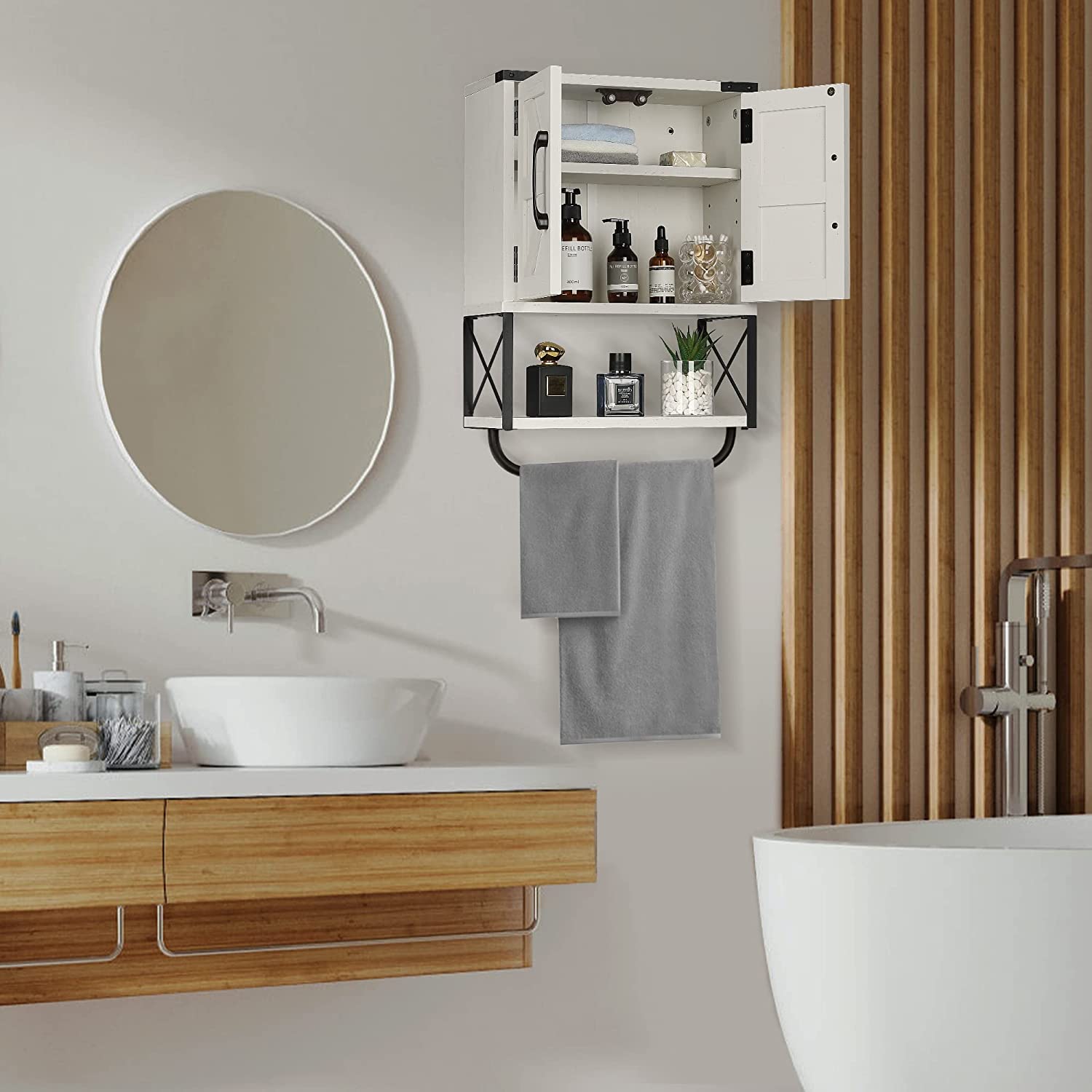

Articles
How To Organize Medicine Cabinet
Modified: March 2, 2024
Learn how to organize your medicine cabinet and maximize bathroom storage space with our helpful tips and tricks.
(Many of the links in this article redirect to a specific reviewed product. Your purchase of these products through affiliate links helps to generate commission for Storables.com, at no extra cost. Learn more)
Introduction
Welcome to our guide on how to organize your medicine cabinet. Having a well-structured and orderly medicine cabinet not only saves you time and frustration but also ensures that your medications are easily accessible and stored safely. In this article, we will take you through a step-by-step process to help you declutter, categorize, and arrange your medications and other items efficiently.
When it comes to your health, having a clutter-free and well-organized medicine cabinet is essential. It allows you to quickly find the medications and supplies you need at a moment’s notice, especially during times of illness or emergencies. Moreover, by regularly assessing and organizing your medicine cabinet, you can ensure that expired medications are discarded properly, reducing the risk of accidentally consuming ineffective or potentially harmful substances.
Organizing your medicine cabinet isn’t just about tidiness—it’s also about safety. By arranging your medications properly, you can minimize the chances of taking the wrong dosage or confusing different medications. Additionally, keeping your medicine cabinet clean and orderly prevents cross-contamination and helps maintain the efficacy of various products.
In this guide, we will cover everything from assessing the state of your current medicine cabinet to properly disposing of expired medications and utilizing storage solutions to maximize space. With our step-by-step instructions, you’ll be able to transform your medicine cabinet into an efficiently organized space.
So, if you’re ready to declutter and simplify your medicine cabinet, let’s dive into the process of organizing and maintaining your medications and other essential items in a smart and user-friendly way.
Key Takeaways:
- Organizing your medicine cabinet is crucial for efficient access to medications and maintaining a safe and clutter-free space. Regular checks, proper disposal of expired medications, and utilizing storage solutions are key to a well-structured cabinet.
- Maintaining an organized medicine cabinet requires regular inventory checks, consolidation of items, and following storage guidelines. Keeping the cabinet clean and clutter-free ensures easy access to medications and promotes a safe and efficient space.
Read more: How To Install A Medicine Cabinet
Assessing Your Medicine Cabinet
The first step in organizing your medicine cabinet is to assess its current state. This involves taking inventory of the items you currently have and evaluating their condition and usefulness. By determining what you have and what needs to be organized, you can create a plan to effectively declutter and rearrange your medicine cabinet.
Start by carefully emptying your medicine cabinet and spreading out all the contents on a clean and flat surface, such as a countertop or table. This will allow you to see everything clearly and make informed decisions about what to keep, discard, or replace.
As you go through each item, ask yourself the following questions:
- Is this medication still within its expiration date?
- Have I used this medication recently, or is it likely to be needed in the near future?
- Is the packaging damaged or compromised in any way?
- Does this medication belong in the medicine cabinet, or would it be more appropriate to store it elsewhere?
- Are there any duplicate or outdated medications that can be safely disposed of?
- Are there any non-medical items taking up space in the medicine cabinet that can be relocated to a more suitable storage area?
As you evaluate each item, separate them into different categories based on their condition and purpose. For example, group all expired medications together, place frequently used medications in a separate pile, and set aside any non-medical items that need to be removed from the medicine cabinet.
By thoroughly assessing each item and categorizing them accordingly, you’ll have a clear understanding of what needs to be organized and how to proceed. Once you’ve completed this initial assessment, you can move on to the next step of gathering the necessary supplies to organize your medicine cabinet efficiently.
Gathering Necessary Supplies
Before you begin organizing your medicine cabinet, it’s important to gather the necessary supplies to ensure a smooth and efficient process. Having the right tools and materials on hand will make it easier to categorize, sort, and arrange your medications and other items effectively. Here are some essential supplies you’ll need:
- Clean cloth or sponge: Start by cleaning your medicine cabinet thoroughly. Use a clean cloth or sponge dampened with mild soap and warm water to wipe down the shelves, walls, and other surfaces. This will remove any dust, residue, or spills that may have accumulated over time.
- Labels or markers: Labels or markers will be useful for categorizing and identifying different medications. Labeling the shelves or containers can help you easily locate specific items and maintain organization in the long run.
- Storage containers or bins: Invest in storage containers or bins that fit the dimensions of your medicine cabinet. These can be used to group similar medications together, keeping them organized and easily accessible.
- Small drawers or dividers: Consider getting small drawers or dividers to further separate and organize items within the storage containers. This will prevent medications from mixing together and make it easier to find what you need.
- Plastic bags for disposal: Be prepared to safely dispose of any expired or unused medications. Have plastic bags ready to collect these items for proper disposal according to local guidelines.
- Measuring spoons or cups: If you have liquid medications, it’s helpful to have measuring spoons or cups on hand to ensure accurate dosages.
- Scissors or a box cutter: These tools will come in handy for opening packaging or cutting out expiration dates from medication boxes to save space.
Having these supplies ready before you start organizing will save you time and make the process much more efficient. Take a moment to gather all the necessary items, and ensure they are easily accessible during the organization process.
Now that you have assembled the essential supplies, we can move on to the next step—emptying and cleaning your medicine cabinet.
Emptying and Cleaning the Medicine Cabinet
Now that you have gathered the necessary supplies, it’s time to empty and clean your medicine cabinet. This step is crucial to start with a clean slate and create a fresh and organized space for your medications and other items. Here’s how to proceed:
- Remove all items: Take out everything from your medicine cabinet and place them on a clean and flat surface. This includes medications, first aid supplies, toiletries, and any other miscellaneous items you may have stored in the cabinet.
- Discard expired or unused medications: Check the expiration dates of each medication and dispose of any that have expired. Expired medications can be ineffective or even harmful, so it’s important to get rid of them properly. Follow local guidelines for safe disposal of medications or consult with a local pharmacy if you have any specific questions.
- Clean the surfaces: Use a clean cloth or sponge dampened with mild soap and warm water to wipe down the shelves, walls, and other surfaces of your medicine cabinet. Pay attention to any sticky residue or spills and make sure to clean them thoroughly. Allow the surfaces to dry completely before moving on to the next step.
- Organize items into categories: As you clean, begin sorting the items you removed from the cabinet into categories. Group similar items together, such as medications, first aid supplies, toiletries, and other belongings.
- Check packaging and quality: Inspect each item and discard any damaged or compromised packaging. Check the quality and usability of each item and consider whether it belongs in the medicine cabinet or if it can be stored elsewhere more appropriately.
By emptying and cleaning your medicine cabinet, you create a blank canvas for organization. This step allows you to assess the quantity and condition of your items, ensuring that only the necessary and usable ones are returned to the cabinet. Decluttering and properly disposing of expired or unused medications is essential for maintaining a safe and organized medicine cabinet.
Once you have completed the emptying and cleaning process, you can proceed to the next step—sorting and categorizing your medications.
Sorting and Categorizing Medications
After emptying and cleaning your medicine cabinet, it’s time to sort and categorize your medications. This step is crucial for efficient organization and easy accessibility. By grouping similar medications together, you’ll be able to quickly locate what you need. Follow these steps to effectively sort and categorize your medications:
- Group medications by type: Start by separating your medications into different categories based on their purpose or type. For example, create groups for pain relievers, cold and flu medications, prescription medications, vitamins or supplements, and any other relevant categories.
- Consider frequency of use: Within each category, further sort the medications based on how frequently they are used. Place frequently used medications within easy reach, while those used less frequently can be stored in a less accessible area of the medicine cabinet.
- Use storage containers or bins: Assign a designated storage container or bin for each medication category. This will help keep similar medications together and prevent them from getting mixed up. Label each container or bin accordingly to easily identify its contents.
- Separate liquid medications: If you have liquid medications, consider storing them separately from other medication forms. Place them in a plastic, leak-proof container or a designated area of the medicine cabinet to prevent spills or contamination.
Additionally, it’s important to keep in mind any specific storage requirements for certain medications. Some medications may need to be stored at a specific temperature or away from direct sunlight. Make note of any such requirements and ensure that your medicine cabinet meets those conditions.
In addition to sorting and categorizing medications, it’s also a good idea to separate first aid supplies, toiletries, and other items that were previously stored in the medicine cabinet. Assign separate storage containers or areas for these items to maintain organization within the cabinet.
By sorting and categorizing your medications, you create a systematic and easy-to-navigate structure in your medicine cabinet. This step saves you time in locating specific medications and helps ensure that your medications are stored safely and used effectively.
Now that you have sorted and categorized your medications, it’s time to address another crucial aspect—checking expiration dates.
Read more: How To Replace Medicine Cabinet
Checking Expiration Dates
As part of organizing your medicine cabinet, it’s important to regularly check the expiration dates of your medications. Expired medications can be ineffective or even pose health risks, so it’s crucial to remove them from your medicine cabinet. Here are the steps to effectively check and manage expiration dates:
- Inspect each medication: Take each medication one by one and check its expiration date. The expiration date is typically printed on the packaging or on the bottle label.
- Look for signs of deterioration: In addition to checking the expiration date, inspect the medication for any signs of deterioration. Discard any medication that has changed in color, texture, or odor.
- Dispose of expired medications appropriately: Once you identify expired medications, it’s important to dispose of them properly. Check your local guidelines for medication disposal or consult a pharmacist for guidance. Avoid flushing medications down the toilet, as it can contaminate water sources.
- Keep track of expiration dates: To stay organized and ensure that you don’t miss any expiration dates in the future, create a system to keep track of the expiration dates of your medications. This can be done by labeling each medication container with its expiration date or by maintaining a separate list or spreadsheet.
Regularly checking expiration dates is crucial for maintaining the potency and safety of your medications. Expired medications can lose their effectiveness and may not provide the intended treatment. By regularly assessing and discarding expired medications, you ensure that your medicine cabinet only contains medications that are still usable.
Remember to also periodically check the expiration dates of other items in your medicine cabinet, such as creams, ointments, and other personal care products. These products can also lose their effectiveness over time.
With expired medications removed from your medicine cabinet, you can move on to the next step of properly disposing of them.
Group similar items together in your medicine cabinet, such as cold medications, first aid supplies, and daily medications. Use bins or baskets to keep smaller items organized and easily accessible.
Properly Disposing of Expired Medications
When it comes to expired medications, proper disposal is vital to ensure safety and minimize environmental impact. Flushing medication down the toilet or throwing it in the trash can have harmful consequences. Follow these guidelines to dispose of expired medications in a safe and responsible manner:
- Check local guidelines: Before disposing of medications, research and familiarize yourself with the specific guidelines set by your local authorities or pharmacies. Different regions may have specific regulations or programs in place for medication disposal.
- Pharmacy drop-off: Many pharmacies and healthcare facilities have drop-off programs or designated bins where you can safely dispose of expired medications. Check with your local pharmacy to see if they have a take-back program and any specific requirements they may have.
- Community take-back events: Keep an eye out for community events or programs that offer secure disposal of expired medications. These events are often organized by local law enforcement agencies or environmental groups.
- Mail-back programs: In some cases, mail-back programs may be available for medication disposal. These programs provide secure envelopes or packages to mail back your expired medications to a designated facility for proper disposal. Check with your local pharmacy or healthcare provider to see if this option is available.
- Remove personal information: Before disposing of any medication packaging, make sure to remove any personal information or labels that may contain sensitive information. This helps protect your privacy and prevents accidental ingestion of medications.
It’s important to note that while some medications can be safely disposed of in household trash, certain medications, such as controlled substances or highly potent drugs, may require special handling. It’s always best to consult with your local pharmacy or healthcare provider for guidance on the proper disposal method for specific medications.
By properly disposing of expired medications, you help prevent accidental consumption, reduce the risk of environmental contamination, and contribute to a safer community.
Now that you have taken care of disposing the expired medications, let’s move on to arranging your medications by category in the medicine cabinet.
Arranging Medications by Category
Now that you have decluttered, cleaned, and disposed of expired medications, it’s time to arrange your medications by category in your medicine cabinet. Properly organizing your medications will make them easily accessible and help you maintain a tidy and efficient storage system. Follow these steps to arrange your medications:
- Group medications together: Begin by placing medications of the same category together. For example, group pain relievers, cold and flu medications, prescription medications, vitamins, and any other relevant categories you identified during the sorting process.
- Consider frequency of use: Within each category, arrange medications based on how frequently they are used. Place frequently used medications within easy reach, such as on the front or top shelves of the medicine cabinet. Less frequently used medications can be stored in less accessible areas.
- Use storage containers or bins: Assign a designated storage container or bin for each medication category. This helps keep similar medications together and prevents them from mixing or getting misplaced. Make sure to label each container or bin with the appropriate category.
- Arrange medications in an organized manner: Within each storage container or bin, arrange medications in a neat and organized manner. You can use dividers or small containers to separate different types of medication or to prevent them from jumbling together.
- Label shelves or zones: To maintain organization, consider labeling the shelves or zones of your medicine cabinet with the corresponding medication categories. This will make it easier to find specific medications quickly.
By arranging your medications by category, you create an organized and user-friendly system within your medicine cabinet. This not only saves you time when searching for specific medications but also helps ensure that medication containers remain upright and properly closed, reducing the risk of spills or confusion.
Remember to regularly assess your medication inventory and adjust your arrangement as needed. As you use or acquire new medications, make sure to incorporate them into the existing system to maintain order in your medicine cabinet.
Now that you have arranged your medications, let’s move on to organizing other items in the medicine cabinet.
Organizing Other Items in the Medicine Cabinet
In addition to medications, your medicine cabinet may also house other essential items such as first aid supplies, toiletries, and personal care products. Organizing these items efficiently will help maximize space and keep everything easily accessible. Here are some tips for organizing other items in your medicine cabinet:
- Categorize non-medical items: Separate non-medical items into categories, such as first aid supplies, oral care products, skincare items, and miscellaneous toiletries. This will help you easily locate specific items when needed.
- Assign storage containers or shelves: Dedicate specific storage containers, bins, or shelves within your medicine cabinet for non-medical items. Consider using smaller containers or dividers within these areas to further organize and compartmentalize the different categories.
- Utilize vertical space: Maximize the space in your medicine cabinet by utilizing the vertical space. Install hanging hooks or small baskets on the inside of the cabinet door to store smaller items and maximize storage capacity.
- Prioritize frequently used items: Place frequently used items, such as toothbrushes, toothpaste, and daily skincare products, within easy reach. Store these items within arm’s reach or on the front shelves of the medicine cabinet for convenient access.
- Consider the size and shape of items: When arranging non-medical items, take into account their size and shape. Store taller items, such as mouthwash or taller bottles, at the back of the shelves to maximize stability and visibility.
By organizing non-medical items in your medicine cabinet, you create a cohesive and functional storage system. This allows you to access essential items quickly and keep them neatly arranged, preventing clutter and confusion.
Remember to periodically assess the condition and usability of non-medical items. Dispose of empty or expired products, and consider transferring items that are rarely used to a separate storage area if needed. Keeping a clean and organized medicine cabinet ensures that you can easily find what you need and maintain a clutter-free space.
Now that you have organized both medications and other items in your medicine cabinet, let’s explore storage solutions to further optimize your space.
Utilizing Storage Solutions
To optimize the space in your medicine cabinet and enhance its functionality, utilizing various storage solutions can make a significant difference. These solutions provide additional organization and efficiency, helping you make the most of the available space. Consider the following storage solutions for your medicine cabinet:
- Shelving inserts: Shelving inserts or expandable shelves can add extra levels within your medicine cabinet, creating more storage space for smaller items like creams, ointments, or compacts. These inserts allow you to utilize vertical space effectively.
- Magnetic strips or baskets: Attach a magnetic strip or install small magnetic baskets on the inside of your medicine cabinet door. These can be used to hold metal objects like tweezers, nail clippers, or small scissors, keeping them easily accessible and organized.
- Drawer dividers: If your medicine cabinet includes drawers, use dividers to separate different items within the drawers. This will prevent items from mixing and make it easier to find what you need.
- Adhesive hooks or containers: Attach adhesive hooks or small containers to the inside walls or shelves of your medicine cabinet. This creates additional storage for items like razors, toothbrushes, or hair accessories.
- Stackable containers or bins: Stackable containers or bins are an excellent option for organizing smaller items in your medicine cabinet. They allow you to maximize vertical space while keeping similar items together.
- Door-mounted organizers: Install a door-mounted organizer with pockets or shelves to store frequently used items or small items like bandages, cotton swabs, or travel-sized products. This makes use of the often-underutilized space behind the cabinet door.
By incorporating these storage solutions into your medicine cabinet, you can create a customized and efficient storage system that maximizes space and keeps items organized. Experiment with different solutions to find what works best for your specific needs and the layout of your medicine cabinet.
Remember to regularly assess the effectiveness of the storage solutions and make adjustments as needed. As your needs evolve, you may need to rearrange or update your storage setup to accommodate new items or optimize accessibility.
With your storage solutions in place, you are well on your way to maintaining an organized medicine cabinet. Let’s explore some tips for maintaining this organization in the long run.
Maintaining an Organized Medicine Cabinet
Once you have organized your medicine cabinet, it’s essential to establish a routine for maintaining its organization. By regularly reviewing and tidying up your cabinet, you can ensure that it remains functional and clutter-free. Here are some tips for maintaining an organized medicine cabinet:
- Perform regular inventory checks: Set a schedule to review and assess the contents of your medicine cabinet. Take note of any expired or unused medications, as well as any items that need to be replenished. Removing expired medications and restocking supplies promptly will keep your cabinet updated and organized.
- Consolidate and reorganize regularly: As you use items and acquire new ones, consider consolidating partially empty containers or combining similar items. This will free up space and keep items easily accessible. Take the time to reorganize your medications and other items to ensure everything is in its designated place.
- Label and relabel containers: Over time, labels may fade or become unclear. Maintain clear and easy-to-read labels on medication containers, storage bins, and shelves to avoid confusion. If items are moved or reorganized, be sure to update the labels accordingly.
- Follow storage guidelines: Pay attention to any specific storage guidelines or recommendations for your medications and other items. Certain medications may require storage at room temperature, away from moisture, or in a dark environment. Adhering to these guidelines will help maintain the effectiveness and usability of your medications.
- Regularly clean and sanitize: Clean your medicine cabinet periodically to prevent dust buildup and maintain a hygienic environment for your medications and personal care items. Wipe down surfaces, shelves, and containers using mild soap and water. Sanitize items such as tweezers or scissors with rubbing alcohol to promote cleanliness.
- Keep the cabinet clutter-free: Avoid overcrowding your medicine cabinet by following a “less is more” approach. Discard any unnecessary packaging or items that don’t belong in the cabinet. Minimizing clutter will make it easier to find what you need and maintain an organized space.
Creating a habit of maintaining your medicine cabinet’s organization will save you time and frustration in the long run. Regular cleaning, inventory checks, and reorganization will ensure that your medicine cabinet remains functional, clutter-free, and optimized for your needs.
By following these maintenance tips, you can enjoy the benefits of an organized medicine cabinet and easily access the items you need for your health and well-being.
Now that you have learned how to maintain an organized medicine cabinet, let’s conclude our guide.
Conclusion
Organizing your medicine cabinet is an essential step in maintaining a well-structured and efficient space for storing your medications and other essential items. By following the steps outlined in this guide, you can transform your medicine cabinet into a streamlined and easily accessible storage solution.
Starting with assessing the current state of your medicine cabinet, emptying and cleaning it, and sorting and categorizing your medications, you create a solid foundation for organization. Checking expiration dates and properly disposing of expired medications ensures the safety and effectiveness of your medication inventory.
Arranging medications by category and organizing other items in designated storage containers or bins simplifies the process of locating specific items. Utilizing storage solutions such as shelving inserts, magnetic strips, or door-mounted organizers helps maximize space and keep items neatly arranged.
Maintaining an organized medicine cabinet requires regular inventory checks, consolidating items, relabeling containers, and following storage guidelines. Keeping the cabinet clean and clutter-free contributes to the overall functionality and usability of the space.
By dedicating time and effort to organizing and maintaining your medicine cabinet, you create an environment that promotes efficiency, safety, and peace of mind. A well-organized medicine cabinet allows you to quickly access your medications and other essential items, ensuring you are fully prepared during times of need.
Remember to periodically revisit and reassess your organization system to accommodate any changes in your medication inventory or personal needs. With a commitment to maintaining order and organization, your medicine cabinet will continue to serve as a reliable and accessible resource for your health and well-being.
Now, armed with the knowledge and steps provided in this guide, you can confidently take on the task of organizing and maintaining your medicine cabinet. Enjoy the benefits of a well-structured and efficiently arranged space, and experience the convenience and peace of mind that comes with easy access to your medications and other essentials.
Frequently Asked Questions about How To Organize Medicine Cabinet
Was this page helpful?
At Storables.com, we guarantee accurate and reliable information. Our content, validated by Expert Board Contributors, is crafted following stringent Editorial Policies. We're committed to providing you with well-researched, expert-backed insights for all your informational needs.
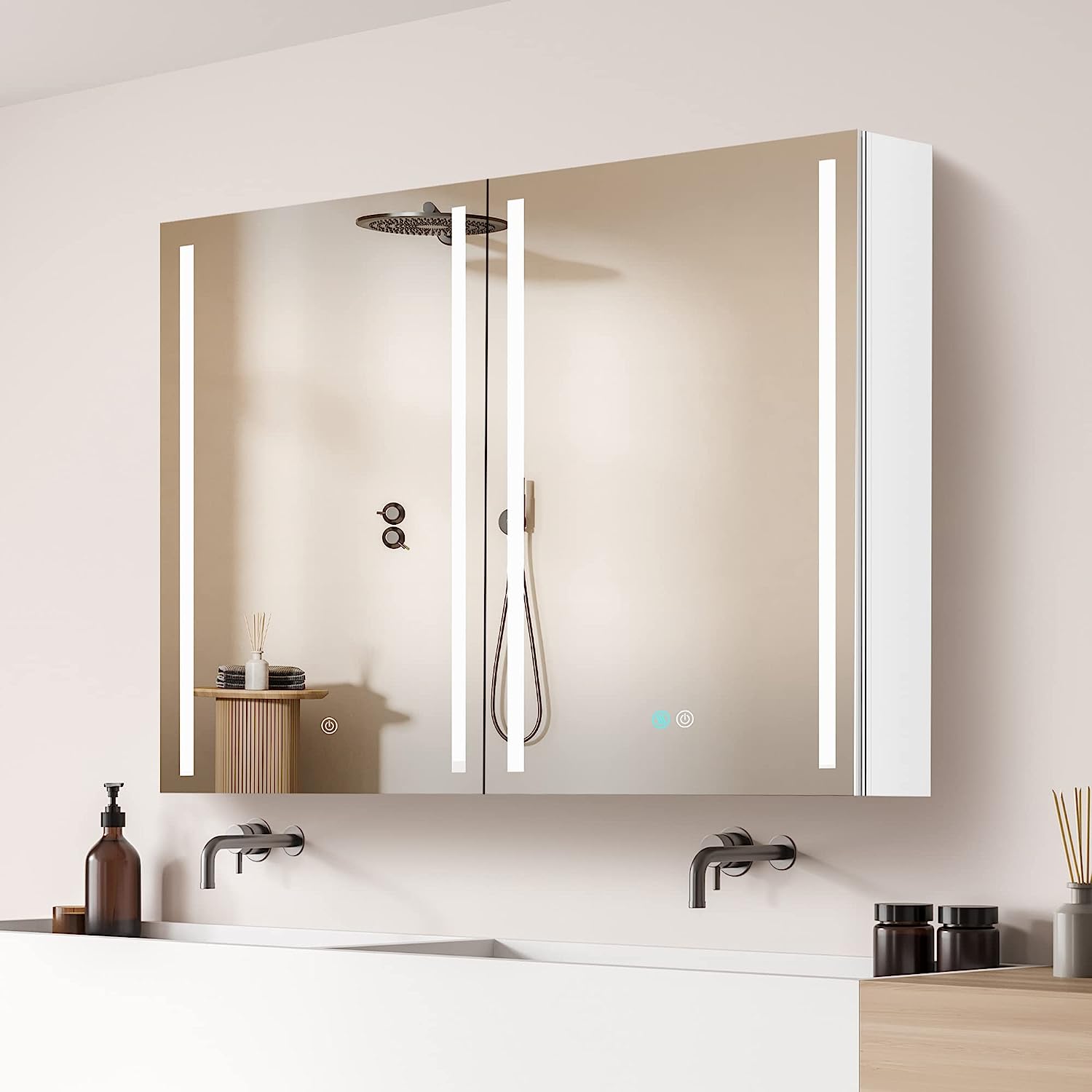
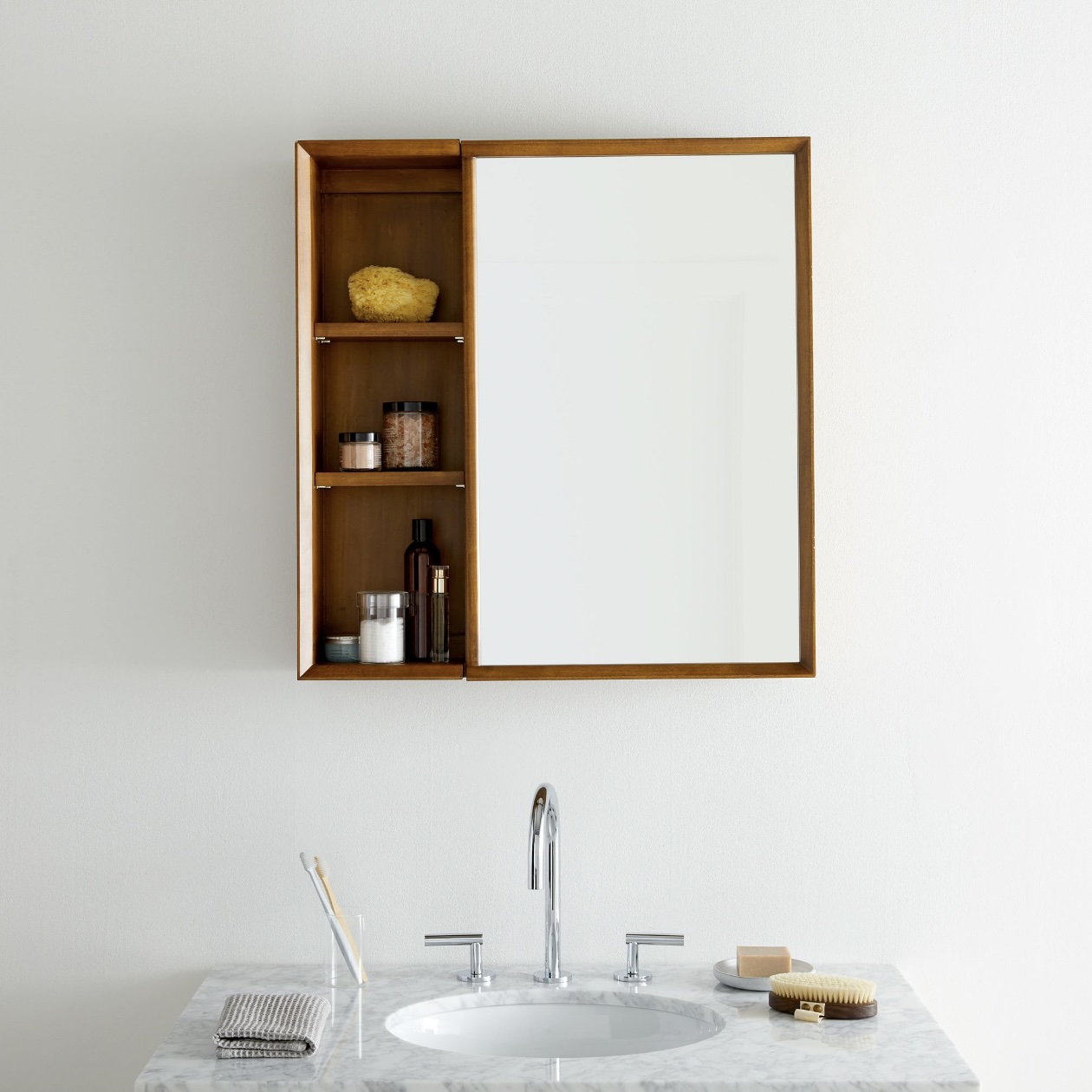
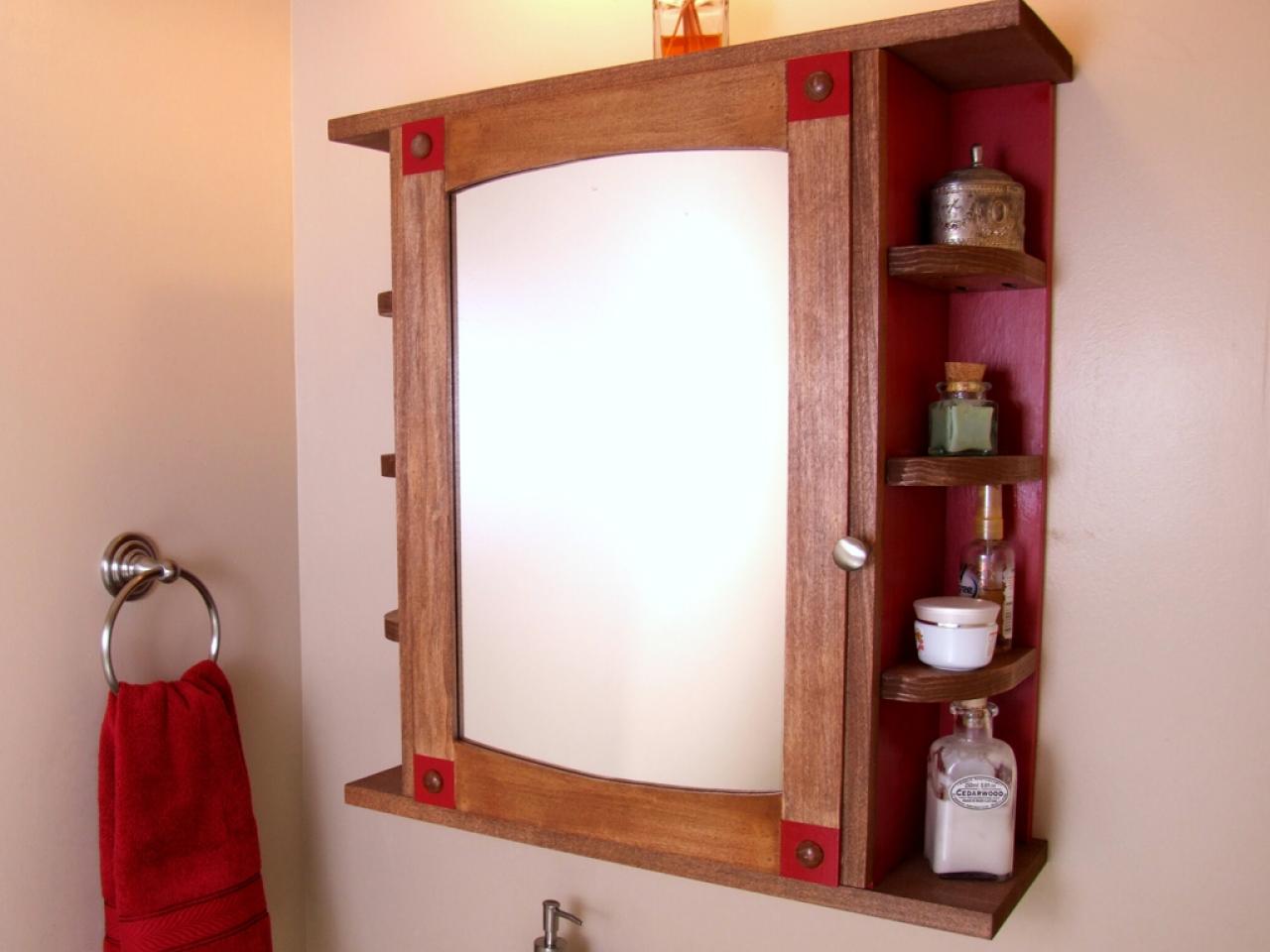

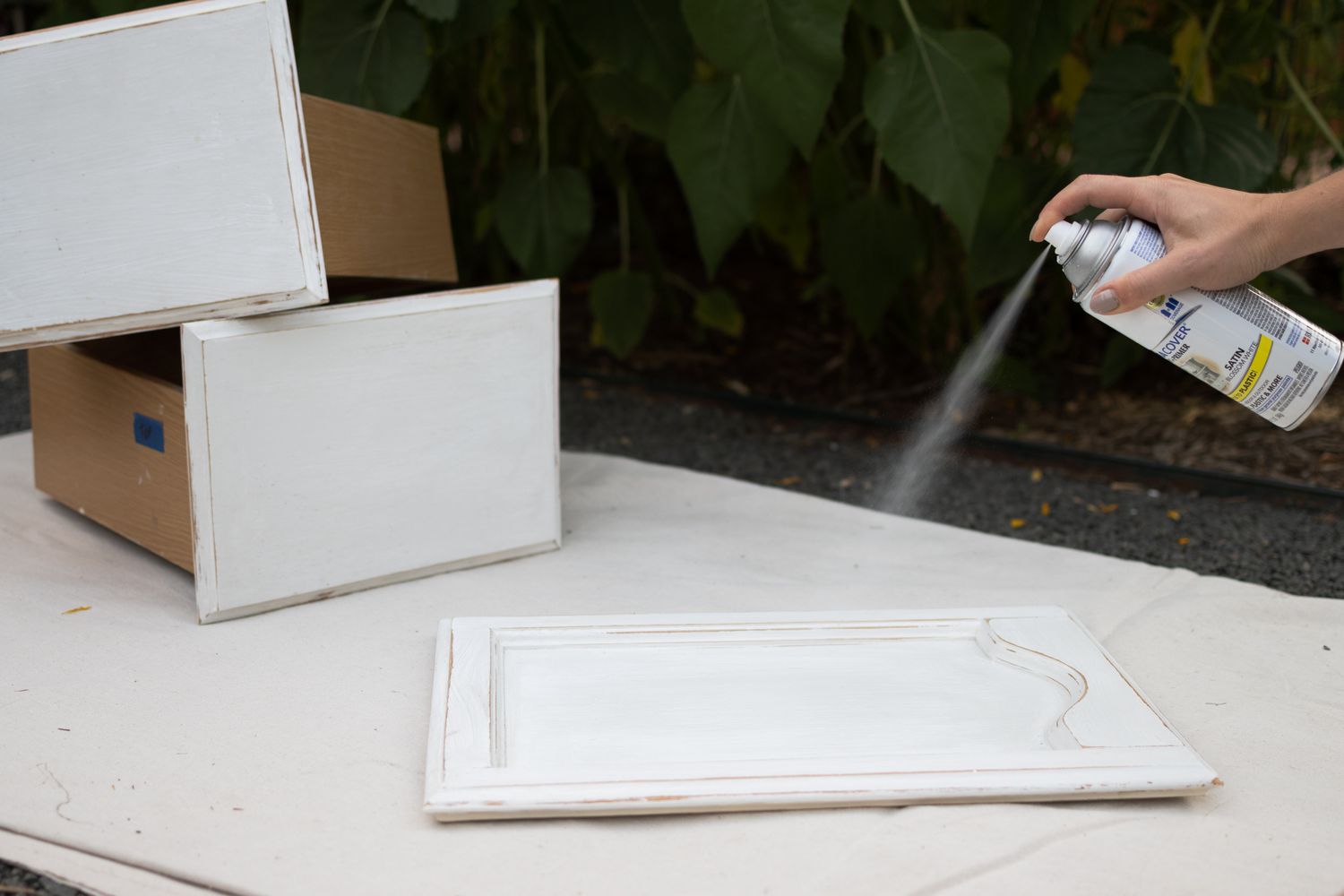
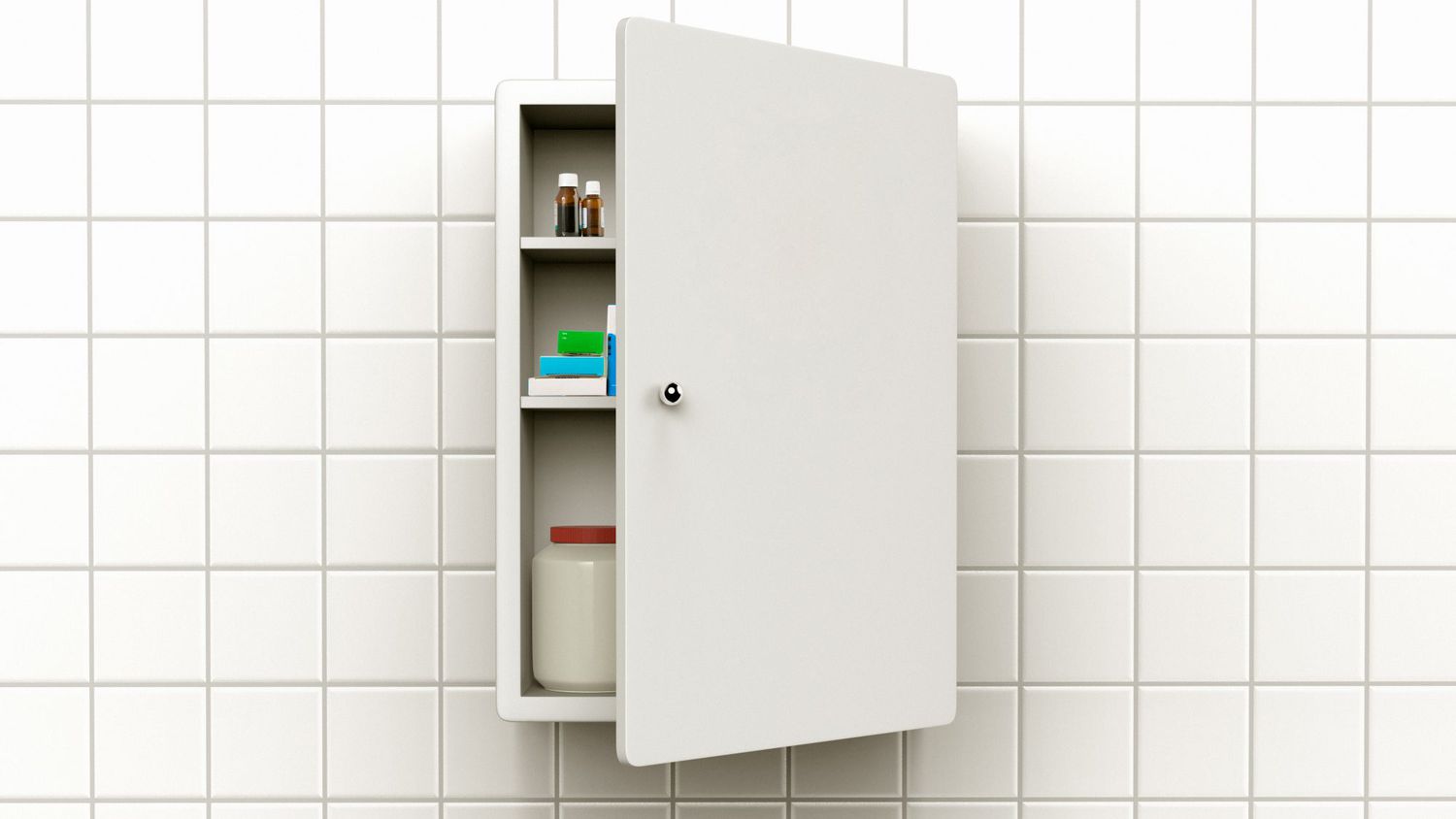

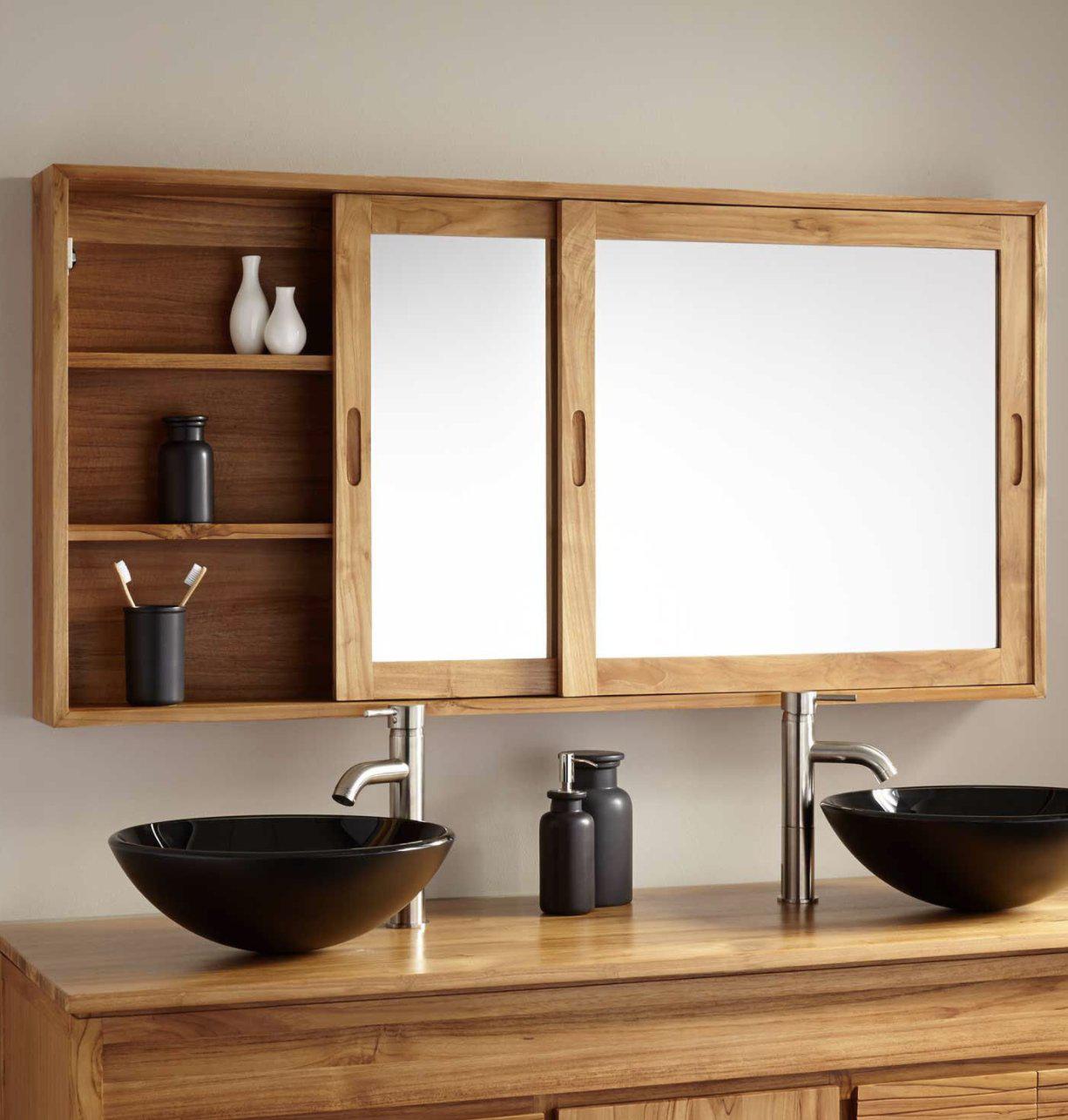
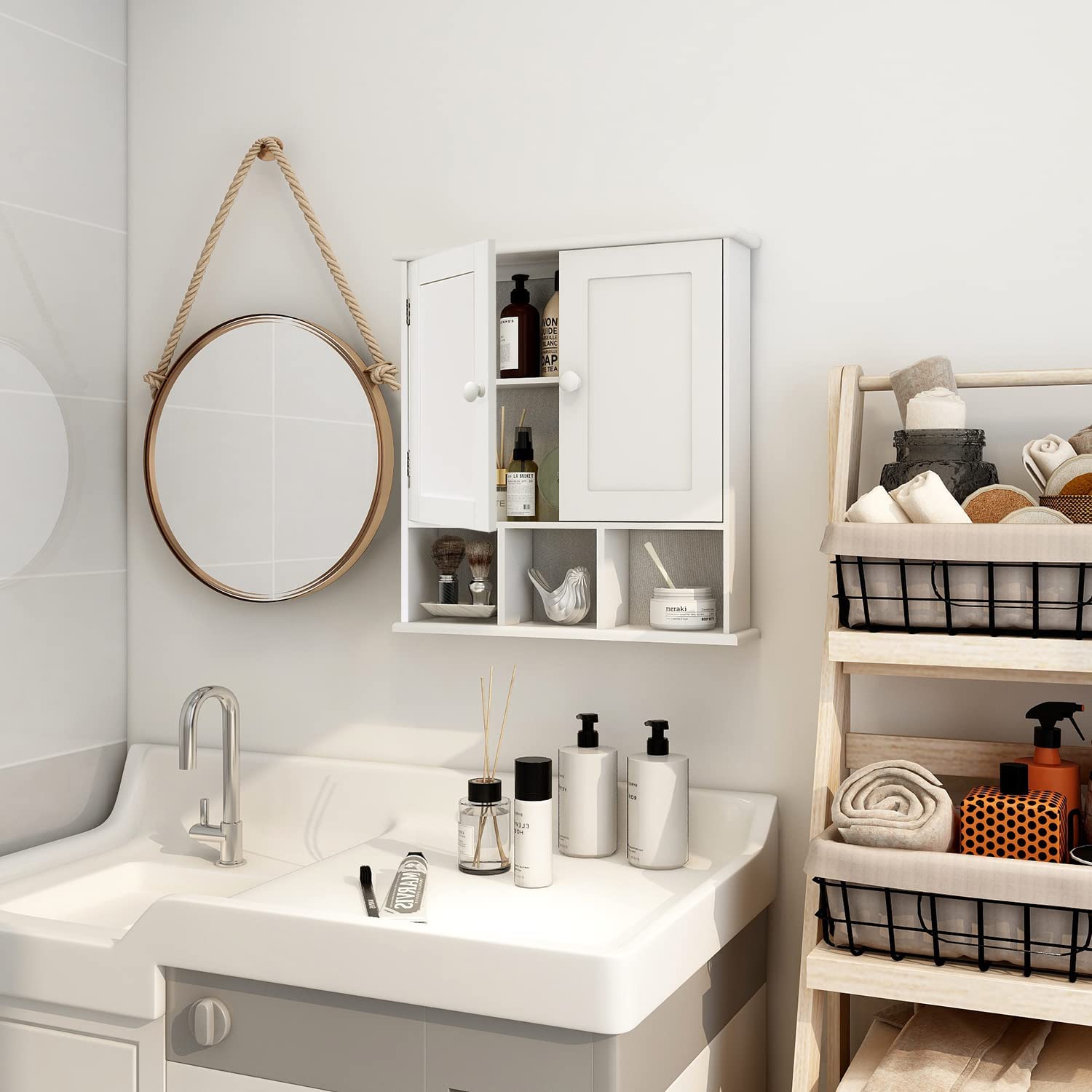
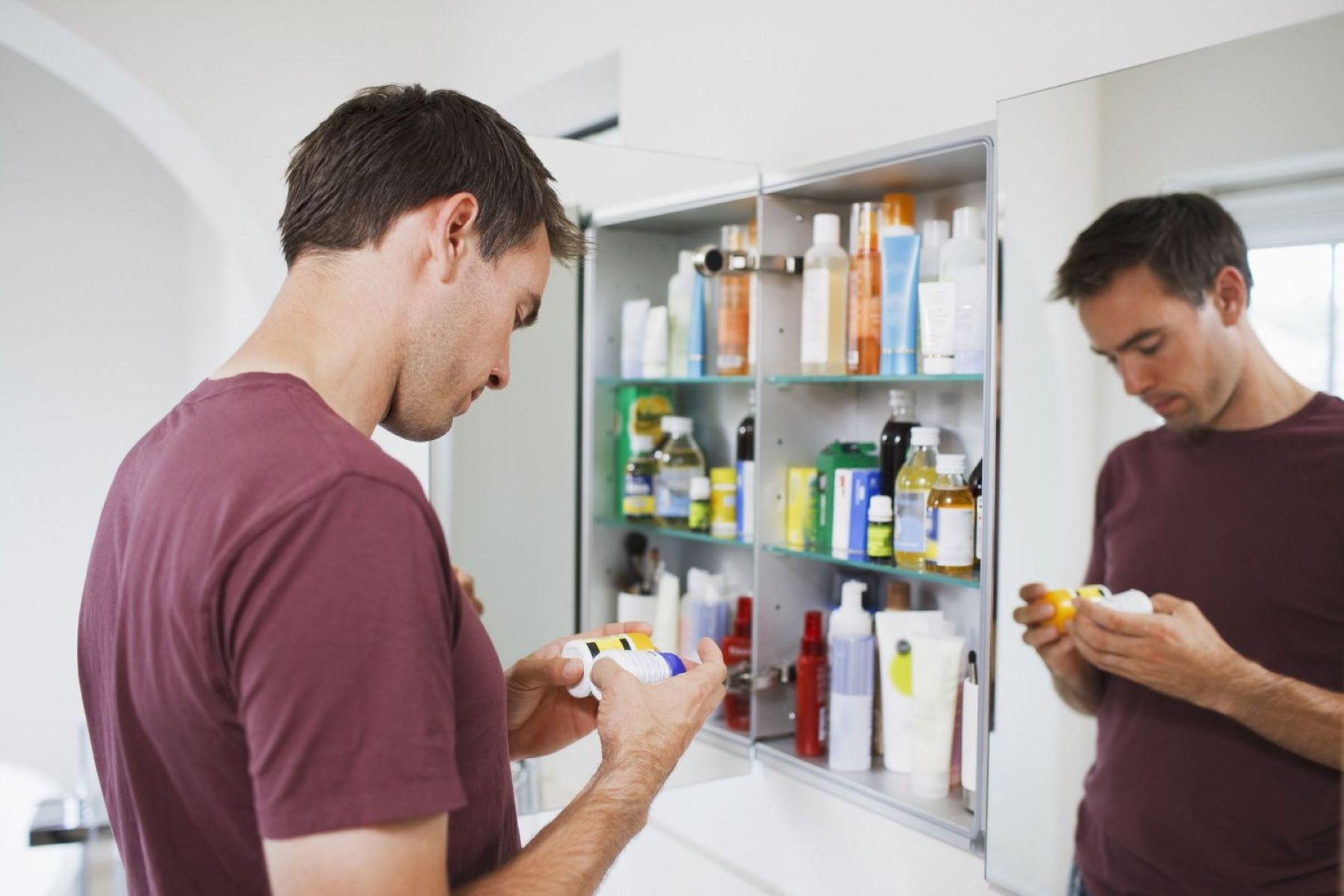
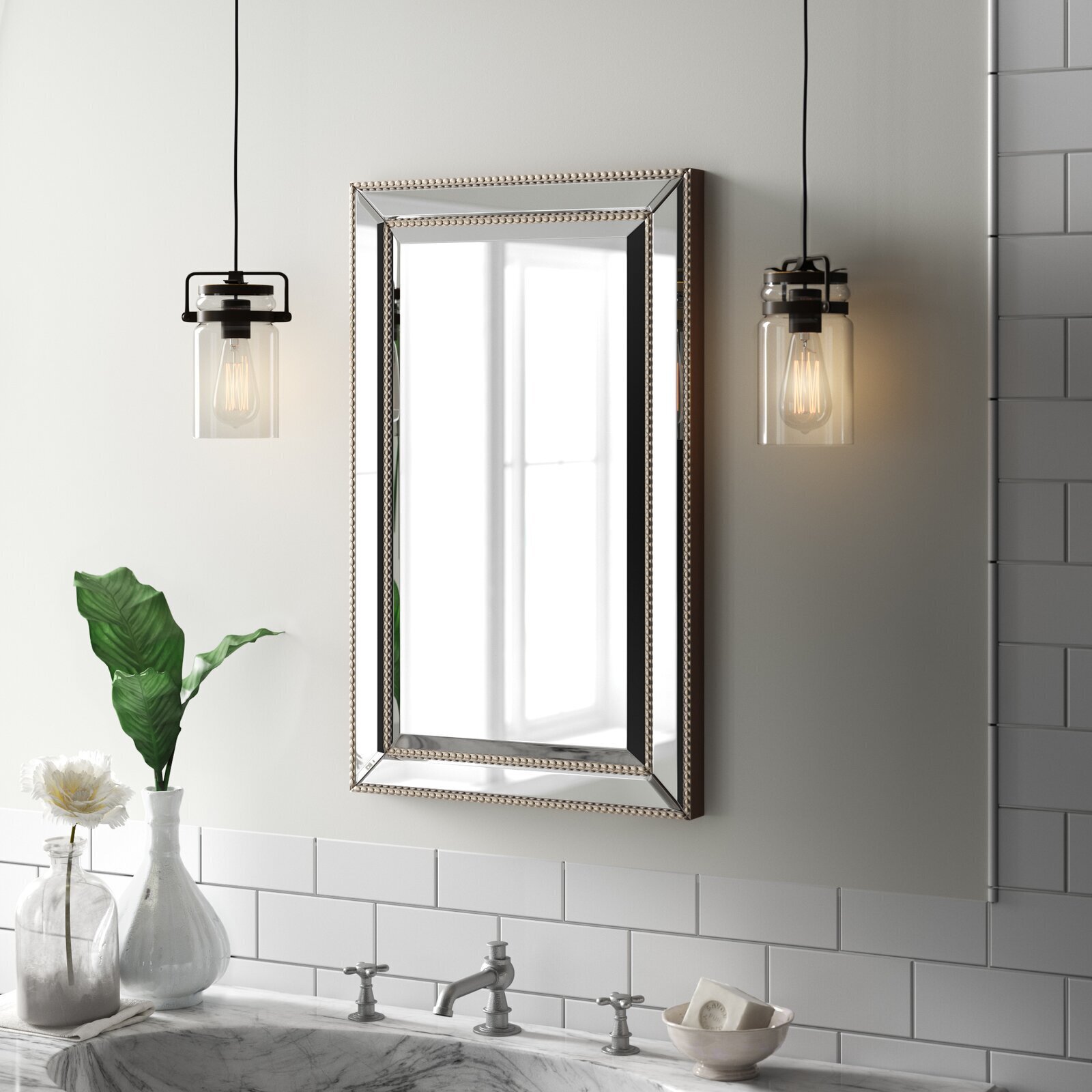
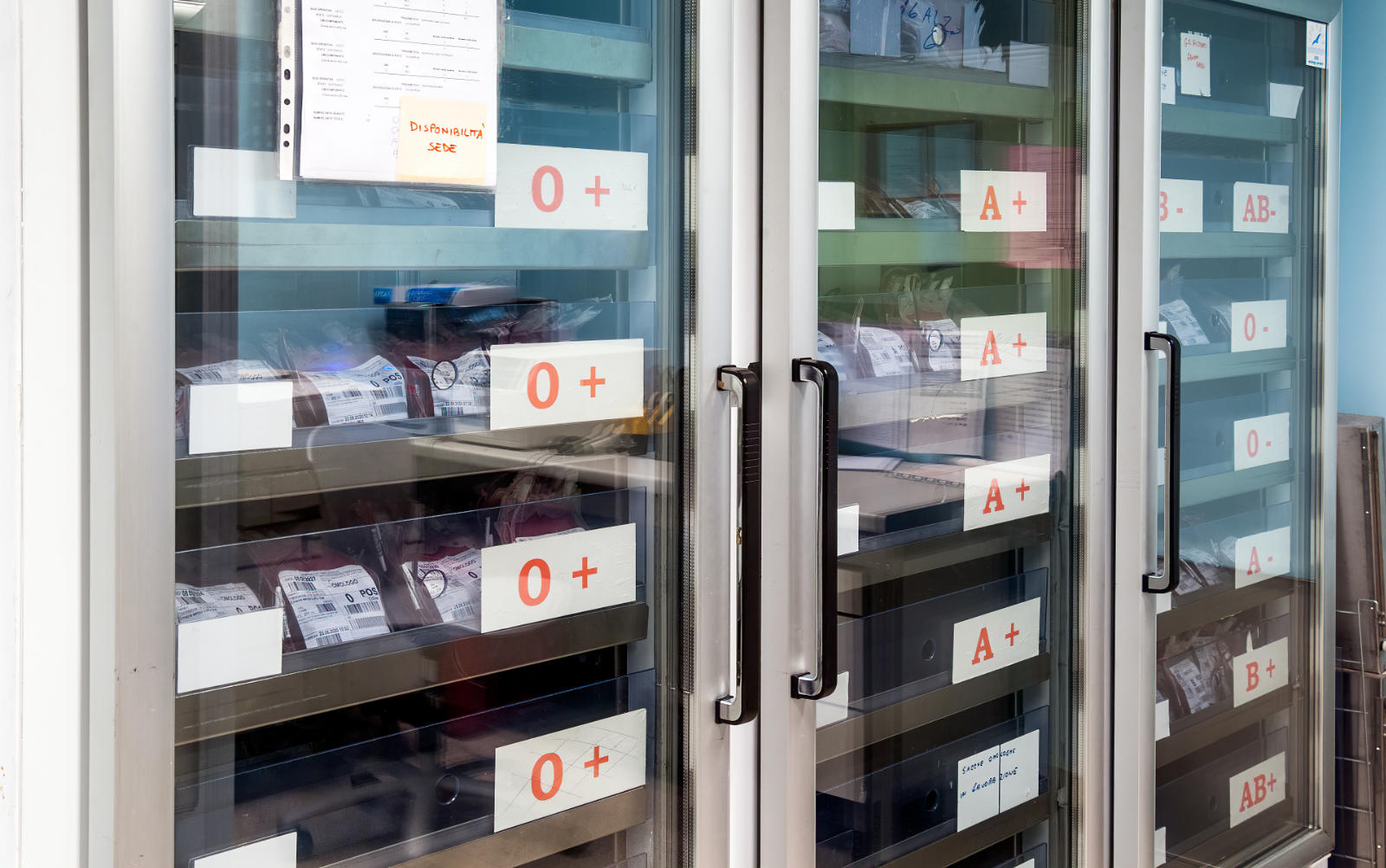
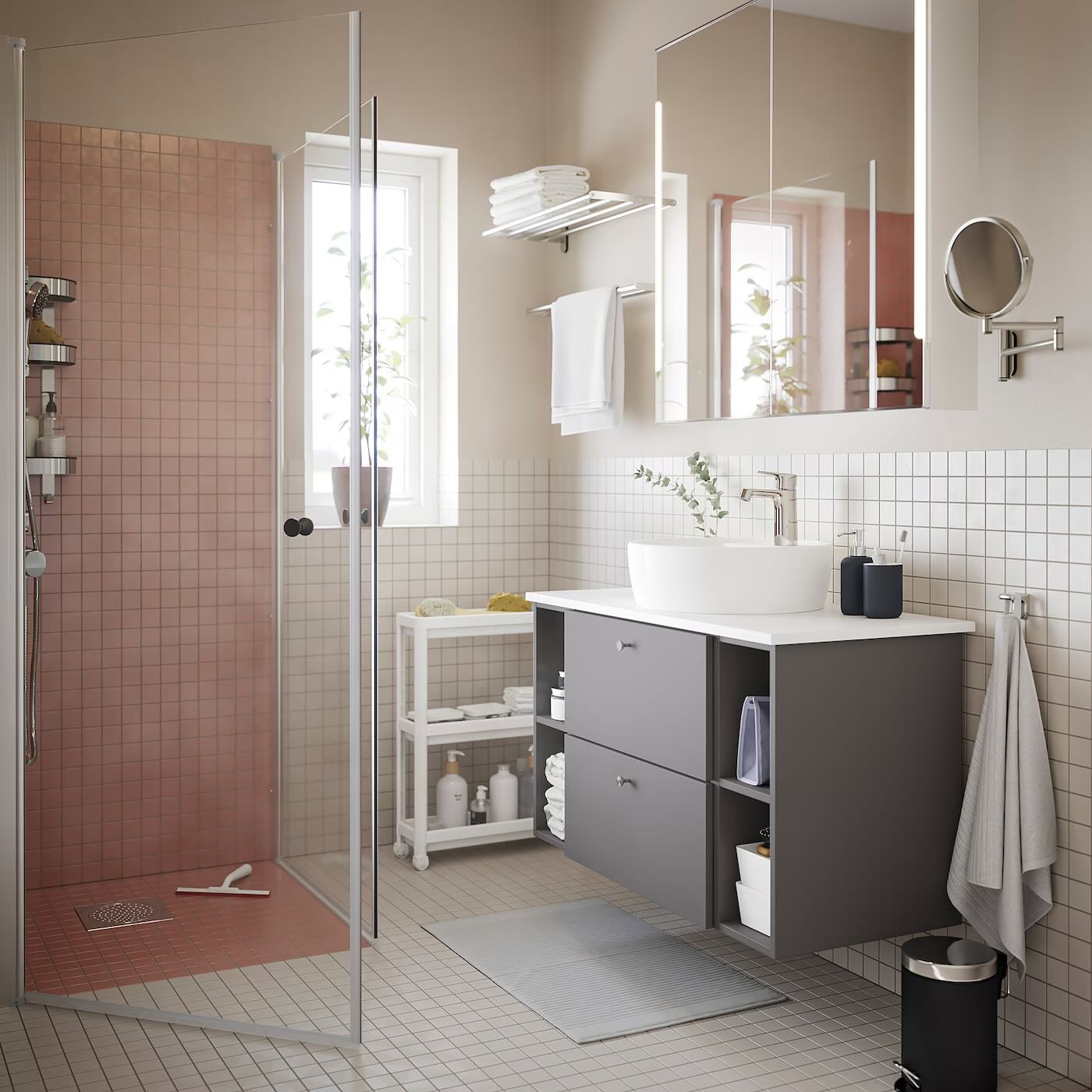

0 thoughts on “How To Organize Medicine Cabinet”